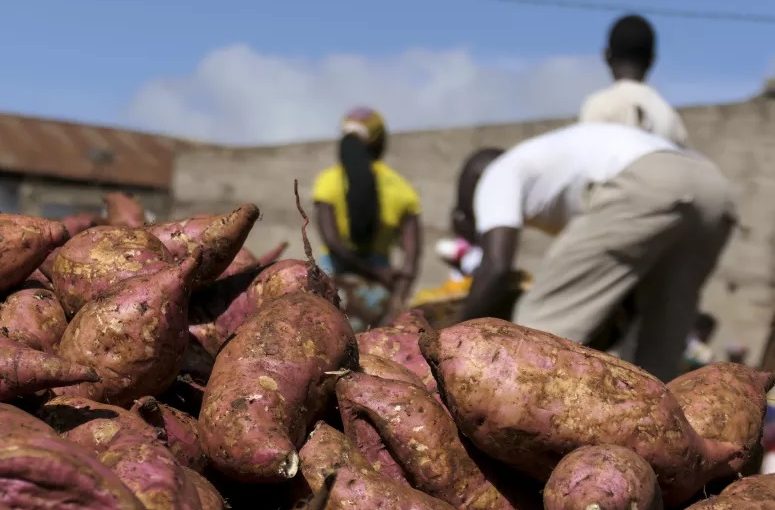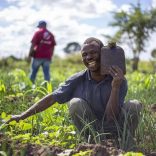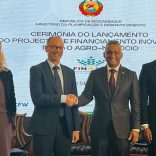Mozambique: Chimoio hosts Roots and Tubers Festival
Mozambique: Cassava crops rose 36pct, meals consumed 4pct in UN project success

FILE - For illustration purposes only. [File photo: Lusa]
A project in Mozambique that increased cassava production by 36% and the number of meals consumed by 4% is identified as an example of success in a report released on Wednesday by the UN.
Entitled “ The State of Food Security and Nutrition in the World 2022: Repurposing Food and Agricultural Policies to Make Healthy Diets More Affordable”, the report, produced by several United Nations agencies, including the Food and Agriculture Organization (FAO) and the UN World Food Programme (WFP), concludes that the number of people affected by hunger in the world increased by 150 million during the Covid-19 pandemic to around 828 million people, and continues to rise.
In a chapter advocating “Investment in Climate Adaptation Practices to Support Affordable Healthy Diets and Inclusive Supply Chains [page 142] the report’s authors point out that “climate change poses the greatest threat to rural small-scale producers, particularly poor and most vulnerable communities”.
“This pressure comes through increasingly frequent extreme weather events, such as droughts, storms and floods, as well as gradual changes such as shorter rainy seasons, delayed onset of rain, rising sea levels and melting glaciers., reads the report.” Based on this, climate adaptation is receiving increasing attention and becoming central to the future of food,” it adds.
Climate adaptation refers to changes in processes, practices and structures to moderate potential damages or to tbenefit from opportunities associated with climate change.
“Investments in climate adaptation solutions take many shapes and forms, depending on the unique context of a community, business, organization, country, or region. Interventions prioritizing the adaptation needs of small-scale producers and micro-,small- and medium sized enterprises (MSMEs) along food supply chains can help ensure the affordability of healthy diets going forward, while bolstering the resilience and inclusiveness of agrifood systems. Innovative governance mechanisms give a real voice and influence to poor rural people, including small-scale producers,” reads the report.
However, “small-scale producers remain underserved by global climate finance”, the report notes.
“They bear the devastating consequences of climate change, degraded soils, food insecurity and irregular migration,” but “so far, only about 1.7% of the money invested globally in climate finance is reaching small-scale producers.”
Pro-Poor Value Chain Development in the Maputo and Limpopo Corridors
The report recalls that between 2019 and 2021, the Adaptation for Smallholder Agriculture Programme (ASAP) a flagship programme for channelling climate and environmental finance to smallholder farmers of the International Fund for Agricultural Development (IFAD), a Rome-based UN agency, invested about $897 million in climate finance in low- and middle-income countries.
It goes on to identify five “successful examples of such investments”, including the case of Mozambique.
In Mozambique, the report highlights“ the Pro-Poor Value Chain Development in the Maputo and Limpopo Corridors [PROSUL] aimed at promoting production practices of cassava, meat and horticulture while also investing in inclusive agribusiness value chains and farmers’ organizations.”
The authors of the report explain that, “through sustainable practices promoted by the [Mozambique] project, cassava productivity increased by 36 percent, and the number of meals consumed also increased by 4 percent.”
“The project also helped to increase resilience by diversifying incomes, thereby increasing the number of beneficiaries’ income sources 15 percent,” adds the same source.
Launched in 2012 with an initial value of 30 million euros, the project comprises 19 selected districts in Gaza, Inhambane and Maputo provinces and aims at a sustainable increase in the income of farmers producing irrigated vegetables, cassava and livestock, including cattle, goats and sheep.
According to the report released on Wednesday, in 2021 hunger affected 278 million people in Africa, 425 million in Asia and 56.5 million in Latin America and the Caribbean.
According to the report, “the figures show persistent regional disparity, with Africa bearing the heaviest burden: one in five people (20.2 per cent of the population) went hungry in 2021, compared to 9.1 per cent in Asia, 8.6 per cent in Latin America and the Caribbean, 5.8 per cent in Oceania and less than 2.5 per cent in North America and Europe.”
Estimates project that “some 670 million people will still face hunger in 2030, or 8% of the world’s population, which is the same as in 2015, when Agenda 2030 was launched” (the Sustainable Development Goals), the document underlines.
Although the worst phase of the pandemic has passed, the challenges to end hunger, food insecurity and all forms of malnutrition continue to grow, says the UN, which warns that the war in Ukraine has worsened the situation as it has disrupted much of the global grain supply and caused an increase in the prices of both grain and fertilisers and energy, produced mainly by Russia.
At the same time, the agencies add, more frequent and severe extreme weather events are also disrupting food supplies, especially in the poorest countries.
The world is moving further away from ending hunger, food insecurity & malnutrition in all forms according to #SOFI2022.
Governments must repurpose current support to agriculture to reduce cost of nutritious & sustainable foods.
📙 New @UN report👉 https://t.co/l7RnrsD9zt pic.twitter.com/fcsYhUq8Mx
— FAO (@FAO) July 6, 2022












Leave a Reply
Be the First to Comment!
You must be logged in to post a comment.
You must be logged in to post a comment.